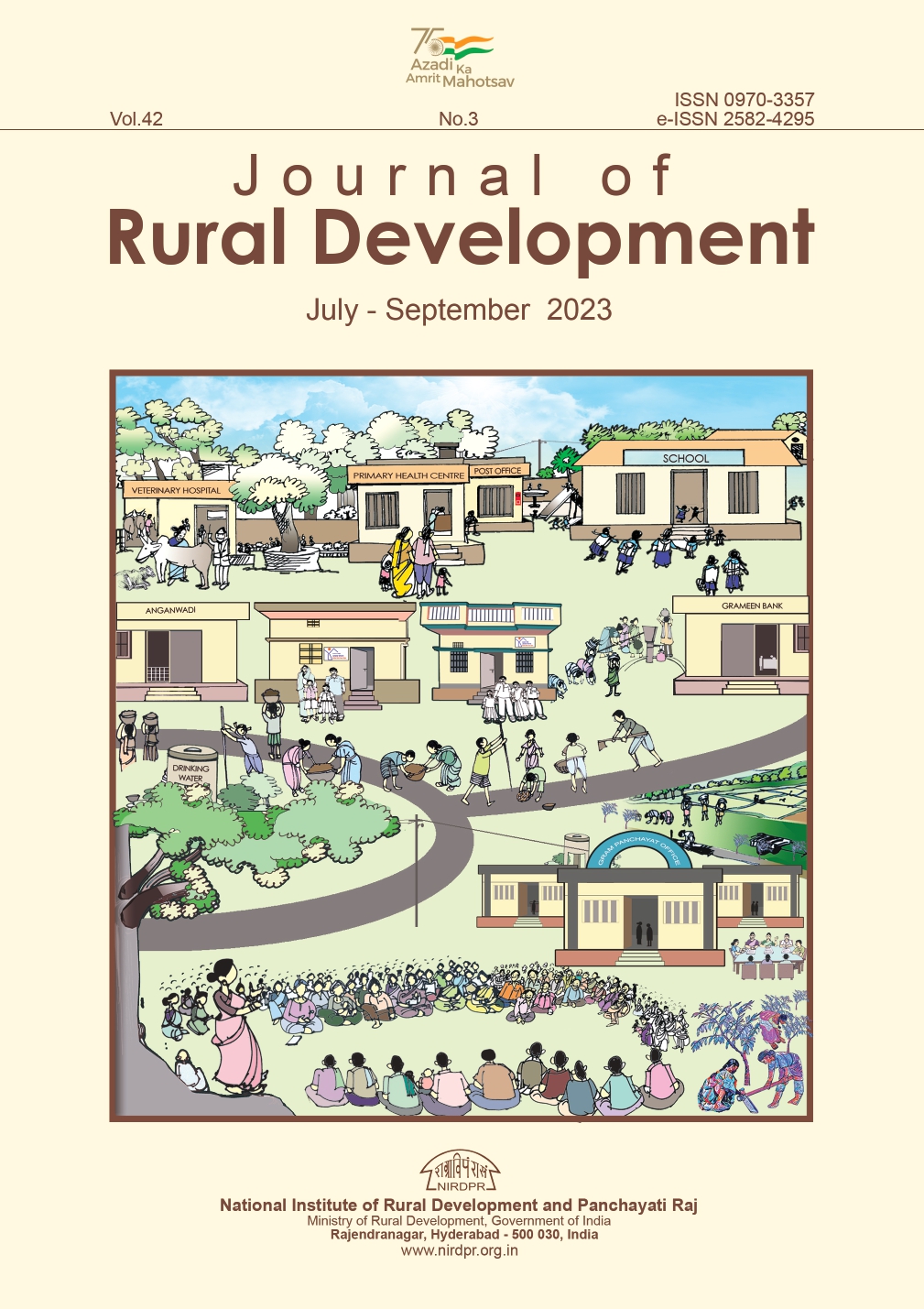Leveraging Community Engagement of Education Institutions for Technology Promotion
DOI:
https://doi.org/10.25175/jrd/2023/v42/i3/173266Keywords:
Educational Institutions, Community Engagement, Technology Promotion, Social Work, Entrepreneurship .Abstract
This article highlights the potential of educational institutions in promoting Science & Technology-based entrepreneurial solutions to communities as part of their community engagement. Students and faculty of education institutions spread across the country are better equipped to disseminate and promote technology as part of their community engagement than any other institutions on the ground. Unfortunately, the enormous potential of the vast network of educational institutions present in the country at the moment remains largely untapped. This note provides some examples which can be considered and the way forward to establish an appropriate model of technology promotion through educational institutions.
Downloads
Downloads
Published
How to Cite
Issue
Section
References
Indian Institute of Technology Delhi (2019). A Compendium on Rural Technology Action Group (RuTAG), Retrieved on 2nd August 2022 from https://drive.google.com/file/d/1jMOYmJoKJrHYW6_i rDjanlicC71D0WNF/view ().
Johnson, D.K.N. & Lybecker, K.M. (2009) Challenges to Technology Transfer: A Literature Review of the Constraints on Environmental Technology Dissemination, Colorado College Working Paper 2009-07, p.25; Retrieved on 5th August 2022 from http://data.upiyptk.ac.id/soe/Materi%20-%20%20Komputer% 20(Pra-Master%20MM)/Jurnal%20ICT%20(Pra%20Master)/Jurnal-02.pdf.
Ministry of Education, Government of India, (2020), National Education Policy 2020, p 37; Retrieved on 2nd August 2022 from https://www.education.gov.in/sites/upload_files/mhrd/files/nep/NEP_Final _English.pdf.
Ministry of Education, Government of India. (2020). Higher Education Profile 2019-20, p-iii; Retrieved on 1st August 2022 from https://www.education.gov.in/sites/upload_files/mhrd/files/statistics-new/he_profile _1920.pdf .
Ministry of Science and Technology: Government of India (n.d.). Science, Technology and Innovation Policy 2013, pp.1-16, Retrieved on 5th August 2022 from http://dst.gov.in/sites/default/files/STI% 20Policy%202013-English.pdf.
National Service Scheme (n.d.). Retrieved on 3rd August 2022, from https://nss.gov.in/nss-detail-page
NIRDPR. (2019). Promoting Appropriate Technologies and Entrepreneurship in Rural Areas: initiatives of the Rural Technology Park, Pragati Newsletter, NIRDPR, Hyderabad, pp-3-7, Retrieved on 2nd August 2022 from http://nirdpr.org.in/NIRD_Docs/newsletters/july19.pdf ().
Unnat Bharat Abhiyan (n.d.) Inspired by the Vision of Transformational Change in Rural Development Processes by Leveraging Knowledge Institutions. Retrieved on 4thAugust 2022 from https:// unnatbharatabhiyan.gov.in/list-participating-institutes
Vigyan Prasar, Department of Science and Technology GoI (2022). Report on Study of Women Technology Parks, Retrieved on 2nd August 2022 from https://dst.gov.in/sites/default/files/Study%20of% 20Women%20Technology%20Parks%20Report.pdf.






